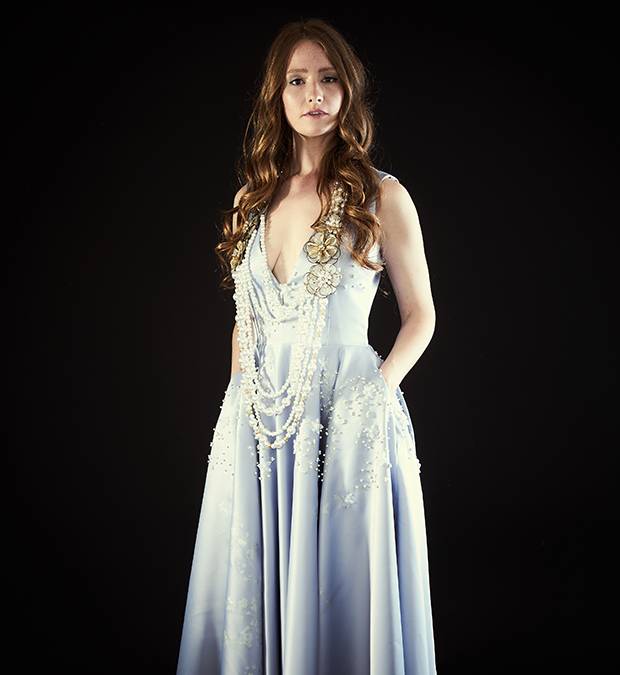No one can accuse Hamilton of not trying hard enough. Boasting a recently revitalized downtown neighbourhood buzzing with new businesses, the Hamilton Economic Development office has been touting its position atop several lists as the best city in the country to invest in. Over the past decade Toronto talent of all stripes has been leaving the high-priced rat race to be part of the Hammer's creative and urban renewal – something regularly chronicled by Toronto-based publications with a measure of derision and chagrin. But now the scrappy city is taking a direct shot at wooing Hogtown talent: At the end of the month (May 31-June 1) the City of Hamilton launches a two-day Toronto pop-up called the Hamilton Consulate. The ambitious delegation hopes to seduce creative and entrepreneurial talent in life sciences, tourism and culture, finance, insurance and real estate, in an effort to round out and boost the regional economy.
The pop-up name may be tongue in cheek, but it has moves. Local success stories like Carla Criminisi, stylist and founder of men's shopping service and wardrobe consultancy Charles & Hunt, and contemporary designer Angela DeMontigny will be among those from Hamilton's business and cultural community, tech sector and start-ups participating in panels and presentations. And "Think Hamilton" ads that spotlight innovative local employers that are hiring (like animation production house Pipeline Studios Inc., Mohawk College, and Weever Apps Inc.) will appear in GTA commuter papers.
Hamilton is on a mission to attract the type of talent that can help continue its progressive trajectory. Fortunately for the city, the pitch of a growing and authentic creative scene appears to be an increasingly easy sale.

Sofia Del Giacco at her studio.
Laura Del Giacco
The gambit to spur growth is that more affordable living begat the city's currently thriving cultural scene. That there's also a new pro soccer league team that will call Hamilton home starting in 2018 helps make the city a place that both creatives and high-value professional, medical-research employees and health-related businesses want to be. The city's rust belt counterparts have been building on their creative communities with similar urban revitalization and economic development initiatives: iron and steel Pittsburgh, for example, effectively lured the likes of Facebook to establish a research division of its Oculus virtual– reality platform in the city. (Former Pittsburgh mayor Tom Murphy will be joining Hamilton mayor Fred Eisenberger at the Toronto pop-up.)
"Hamilton wasn't really part of my plans," says Hutchison label fashion designer Sofia Del Giacco, but she and her husband, an elementary school French teacher who's also in a band, wanted to buy a house and "start up a life," relocating from her hometown of Montreal last July. They'd already been coming to Hamilton for the past decade to visit family nearby and had seen its arts scene grow, so after spending regular weekends checking out the city's Art Crawl, music shows and maker's markets, they fell for its liveability and finally bought a house on Ottawa Street.
The region's many craft fairs and flea markets attest to the city's major creative quotient, like the popular Hamilton Flea co-founded by Whitney McMeekin of the Girl on the Wing retro-vintage shop. She was recently presented with a community partnership award from the downtown's International Village BIA board for her contribution to the community, because even that weekend pastime plays a part in the city's essential economic development outreach to new residents.

Blackbird Studios. Hamilton Consulate hopes to attract creative and entrepreneurial talent in an effort to round out and boost the regional economy.
Derrick Vanderkolk/Style Group
The food scene is just as lively. Erin Dunham and Matt Kershaw's growing Other Bird Inc. hospitality group, for example, crowd-funded to open the Mule, the boisterous tacos and mezcal joint that anchors the corner of King William Street in the renovated former Empire Times newspaper building. Many of the scene's ranks now include familiar top talent from Toronto restaurants. The owners of Aberdeen Tavern and Dundurn Market, for example, opened airy modern bistro the French in a historical building down the street a few months ago with, as chronicled in the pages of this newspaper, John Forcier as head chef (late of Toronto's landmark restaurant Canoe).
The cost of doing business in Hamilton is competitive – an average leasing rate is $10-$25 net per square foot, which can be half of the cost of comparable neighbourhoods in Toronto. Between that and the financial-incentive programs of loans and grants for commercial property improvements to potential developers and tenants, the interesting workspaces and assortment of galleries, boutiques, restaurants and vintage shops around, James Street North already feels like the Queen Street West of 25 years ago. Kerry Wade and Lynn Bebee, who started their made-in-Hamilton women's line Blackbird Studios in 2008, opted for a boutique on James Street North and they cut, sew and customize the collection's fabrics with distinctive screen prints at their studio in the Cotton Factory, a 10-minute drive east from their shop.
The Cotton Factory is a sprawling 150,000-square-foot former textile-mill complex, circa-1900, that was bought and restored by Toronto developer Rob Zeidler in 2014. It now has over 100 tenants. He had, for years, been talking about "doing my own building" and finally, after "25 years of dinner conversations," borrowed best practices from younger sister Christina, who is the force behind the Gladstone Hotel, and from his sister Margie's vision for 401 Richmond, the former factory in Toronto she repurposed and built into a successful community of artists, non-profits and creative businesses. "We have just two unrented units in the place," says Zeidler, who commutes from Toronto daily to work on-site, and sits on the Hamilton Chamber of Commerce board. He, too, is part of the upcoming Hamilton Consulate.

Del Giacco lookbook.
Several other Cotton Factory tenants, including Blackbird Studios, are among the Toronto delegation. "We want more creative people, of course, but we are still in need of stitchers and cutters and people in the garment industry," Bebee says, adding that the city could also use more people who can consult and find funding for small businesses. According to Hamilton Workforce Planning's most recent annual employer survey and labour market data, the highest upcoming demand is in service jobs, sales and marketing, as well as production-worker occupations.
Tenants like Blackbird Studios have inspired Zeidler to expand the potential of the Cotton Factory within the community. He's since launched Fashion Alley, studio spaces for local designers, but the goal is to add trained workers over the next few years as a way of reviving the factory (and city's) heritage of textile prowess. "You need the old equipment but you also need the specialty skill set. And these are the kinds of projects that give your building and community life. It's social capital," he says. Though Zeidler cautions that social capital can be easily destroyed: "You have to be really conscious of that. Being authentic is important."
That's another important part of Hamilton's pitch – the city isn't just a cheaper Toronto-lite but is authentically itself, with its own strong culture and no-nonsense identity. Where Toronto can sometimes feel like a creative community merely enduring a city, the scene in Hamilton feels like it's a creative community enthusiastically building one.
Visit tgam.ca/newsletters to sign up for the Globe Style e-newsletter, your weekly digital guide to the players and trends influencing fashion, design and entertaining, plus shopping tips and inspiration for living well. And follow Globe Style on Instagram @globestyle.
